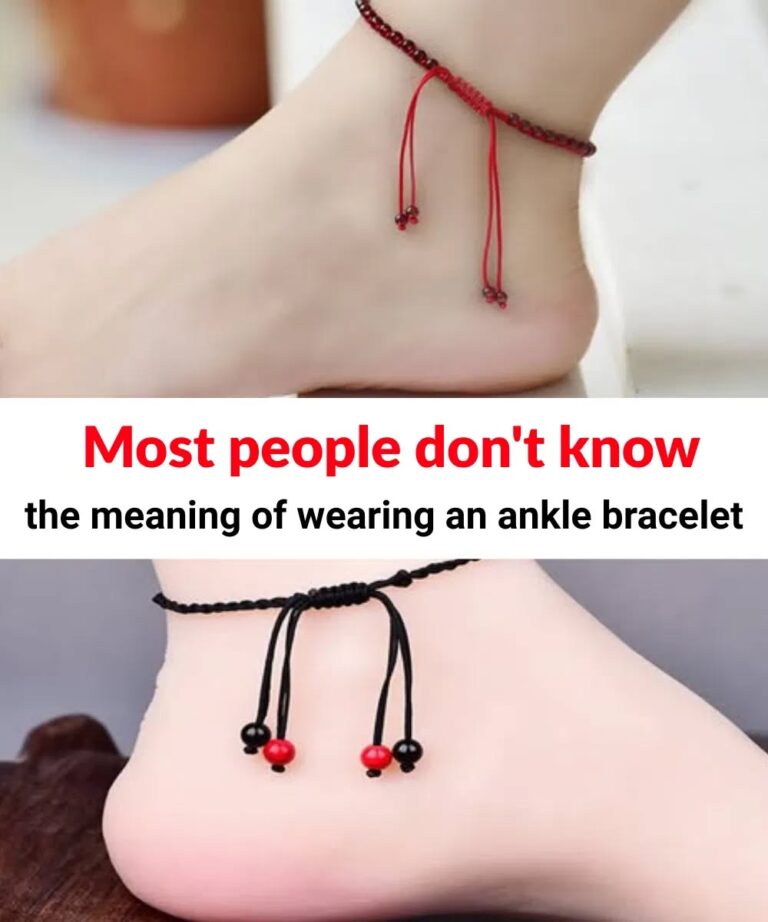Ankle bracelets, often referred to as anklets, are lightweight, elegant, and undeniably charming accessories that have stood the test of time. Though many people today wear them as simple fashion statements, anklets carry a rich cultural and historical significance that stretches across civilizations. From ancient protective charms to modern-day symbols of carefree style, the anklet has taken on many meanings over the centuries. What may seem like a trendy summer accessory actually has deep roots that reflect beauty, tradition, and personal expression. So, what’s the story behind this dainty piece of jewelry, and why does it continue to hold such lasting appeal?

The anklet has been around for thousands of years, worn by people from vastly different cultures, each attributing their own meaning and symbolism to it. In ancient Egypt, anklets were not just ornamental—they were believed to offer protection and attract good fortune. These pieces often featured tiny charms or bells that jingled as the wearer moved. Laborers and commoners frequently wore them, not only for their visual appeal but also for their supposed ability to repel insects and bad energy. The jingling sound created while walking was thought to serve both a practical and spiritual purpose, blending beauty with function.
In India, the anklet holds a more sacred and culturally significant place. Typically made of silver, anklets are a traditional accessory for married women, serving as a visible sign of their marital status. The soft, rhythmic sound of the anklets is seen as a symbol of femininity, grace, and domestic harmony. In Indian weddings, anklets are often given as part of a bride’s dowry or worn during the ceremony, representing the start of her new life. They are far more than just pretty accessories—they are woven into rituals, customs, and the very fabric of family life.
Anklets also appear in Arabian culture, particularly in historical tales such as those found in One Thousand and One Nights. Their meanings, however, vary depending on the time period and region. In some cases, anklets were associated with dancers or entertainers and sometimes linked to women of specific professions or marginalized communities. While some of these associations were negative, others were celebratory, highlighting the sensual and artistic qualities of women who wore them. The interpretation of anklets in these cultures is highly nuanced, influenced by regional traditions, societal roles, and historical context.
In the ancient civilizations of Sumer and Rome, anklets became a status symbol. Women of high social rank would wear elaborate versions crafted from gold, silver, and sometimes adorned with gemstones. These ornate pieces weren’t just about beauty—they were clear signals of wealth and prestige. To wear such an anklet meant you were part of the elite, and it helped convey a woman’s social standing to those around her. The design and material of the anklet spoke volumes about the wearer’s lifestyle and influence.
Fast forward to today, and the anklet has become a staple of modern fashion, especially during the summer months when sandals, shorts, and beach attire take center stage. No longer confined to tradition, anklets now symbolize femininity, playfulness, and a free-spirited sense of style. They can be simple or bold, subtle or statement-making. The modern anklet allows wearers to express their individuality while paying homage to its cultural past. Whether you prefer a delicate gold chain, a beaded boho piece, or a colorful charm anklet, there’s a style for every personality and occasion.
People often ask whether there’s a rule about which ankle to wear an anklet on—left or right. The answer is that there’s no universal rule or symbolism tied to either side. Some might associate one side with marital status or other meanings in specific cultures, but in general, it all comes down to personal style, comfort, and preference. Wear it where it feels right to you and where it complements your outfit best.
From its ancient role as a protective talisman to its place in modern fashion, the ankle bracelet continues to evolve while remaining a powerful form of self-expression. It connects us to history, celebrates tradition, and embraces individuality—all in one simple, beautiful accessory.





